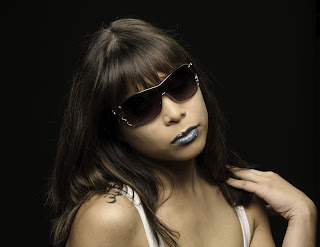As you might know I’ve developed
a film camera jones. I know it sounds
crazy for a guy who is totally invested in digital equipment. I still shoot all of my “normal” photography
with digital, but use film when I want to go out to shoot for fun or when I do
street photography. Unless I’m taking a
big Mamiya medium format camera out, there’s something stealthy shooting street
photography with a film camera. They
tend to be quite small or unthreatening.
A Nikon DSLR with a battery grip & a honking Nikkor 24-70mm f/2.8
lens in anything but stealthy.
But I digress dear readers; I’ve
developed a bit of a film camera addiction.
“Hello everyone, my name is Steve, and I like film cameras”.
I thought it would be fun to have
a series of posts about some of the cameras I’ve picked up over the past
several months. Most have been purchased
at a local Goodwill Outlet, at flea markets, or online. The most expensive film camera I’ve purchased
so far is the before mentioned Mamiya 645 however, all the rest are VERY
inexpensive.
Here goes my first review. May I introduce the Plastic Filmtastic 120Debonair. What a name, “Debonair”. Just has a hint of cool to it, doesn’t
it? And as the name suggests it’s almost
all plastic including the lens and it shoots 120 film. It’s a rangefinder. Here she is:
 |
| Here she is along with a roll of Ilford XP2 400 which will be loaded next |
I picked the camera up at the
Film Photography Project Store online for only $19.99. The store is part of the Film PhotographyProject website and podcast that I listen to regularly now. They talked about the camera on a podcast and
I said, “I must have one”, so I ordered it.
The backstory is the camera is from the 80’s (I think) and they are made
in Hong Kong. I suspect they were
originally for a cheap toy or promotional give away. The FPP purchased a boat load of them and are
since selling them themselves. I think
this is the only place you can get them.
Anyway the camera is, how would I
describe it…flimsy and plastic. But that’s
OK, it’s for fun. It’s light leaky, and
the lens tends to generate reasonable vignettes. The lens also tends to distort the image
slightly giving the photos a mild fisheye look.
The camera loads really easily, but you need to take care to make sure
it’s completely closed, or see the note about light leaks. I also put some black electrician’s tape over
the back to minimize the light leaks, but that was probably not necessary.
 |
| Mac & Cheese Japanese |
 |
| Notice the light leak on the left side of the photos - a common theme |
The shutter release is all
manual. Very smooth. There is no need for no stinking
battery. And the film advance is true,
but you need to watch the 120 film numbers in the red film numbering window
since it doesn’t stop automatically. There’s even a hot shoe that I mounted an
ancient Vivitar speedlight, and guess what it worked!
The “Super Lens” is a 60mm f/1.8,
or so it says. There are 3 focus
settings marked on the lens and a switch for sunlight or cloudy/bulb. I played with the settings and honestly didn’t
notice much difference, but I’m sure I would need to experiment more.
 |
| Pretty good color but light leaks and the vignetting |
 |
| Mr "M" is going to be roasted in the fire pit - not bad for no flash and past dusk |
I ran a couple of rolls of 120 film through it and bottomline
the camera worked great. Is it practical
for anything except for a fun “toy” camera…no, but if you want a camera to try
out 120 film, here you go.
Enjoy























